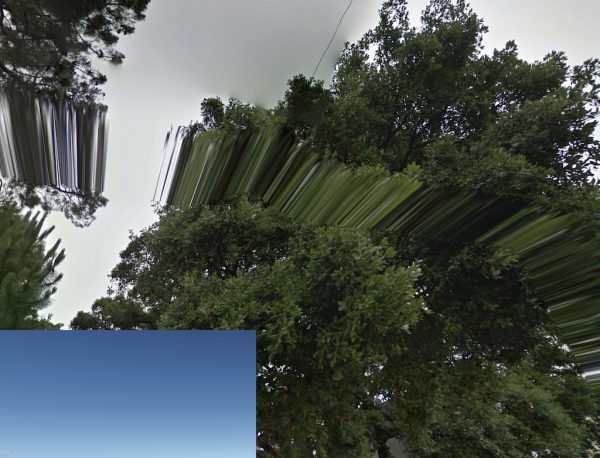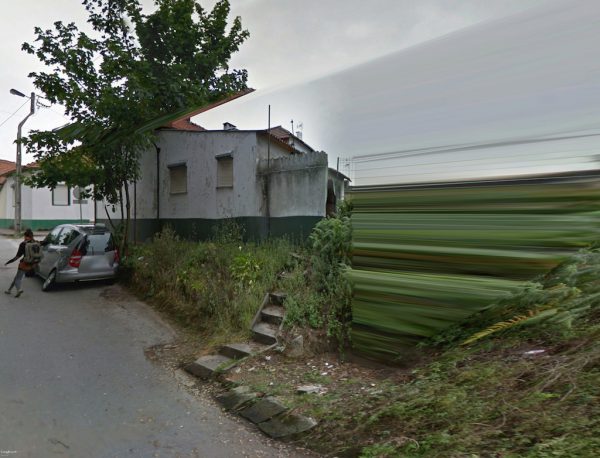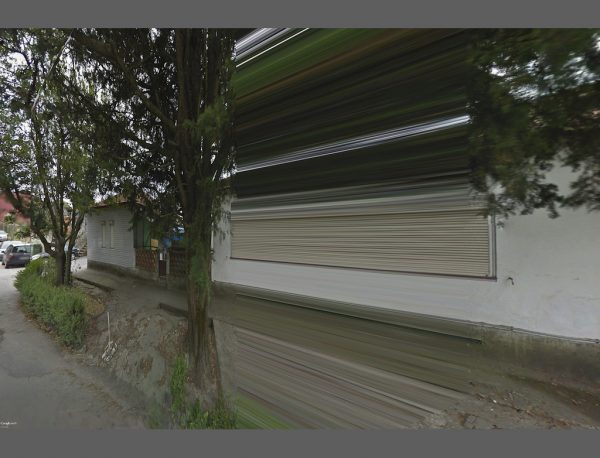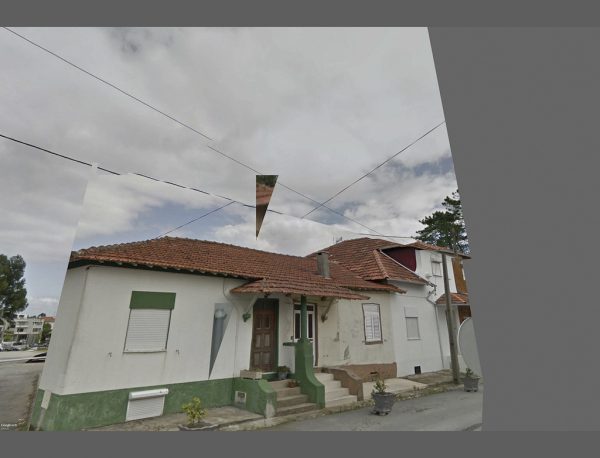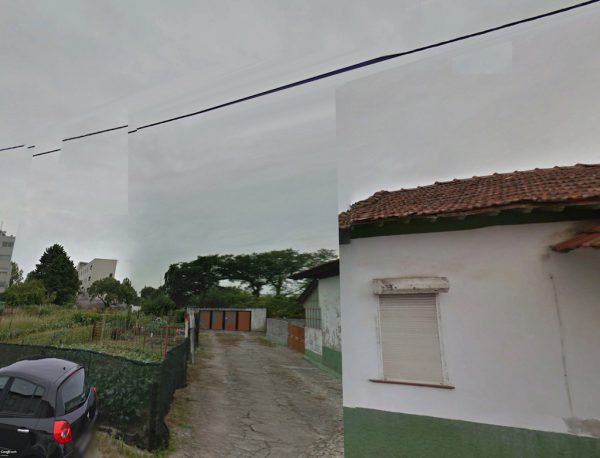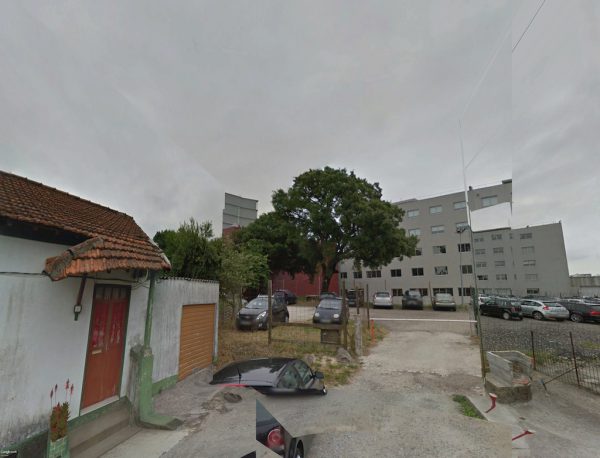O Bairro da antiga Fábrica de Fiação e Tecidos da Areosa, no Porto, com entrada junto à estrada da circunvalação (N12) no seu lado norte, viu crescer a uns cem metros a oeste o Hospital de S. João (terminado em 1959). Do mesmo lado e ainda mais próximo do bairro, a Escola Superior de Educação do Instituto Politécnico do Porto (IPP) começou a tomar forma em meados dos anos 80. A Faculdade de Engenharia da Universidade do Porto (FEUP), fechou o cerco a sul já na primeira década do século XXI. Olhando para leste vê-se (e ouve-se) o fluxo acelerado dos automóveis no acesso às auto estradas do norte (A3 e A4).
The neighbourhood of old Fábrica de Fiação e Tecidos (Wool and Fabric Factory) of Areosa district, in Porto, with entrance by the ring road (N12) on its north side, saw the Hospital of S. João apear a few hundred meters to the west (completed in 1959). From the same side and even closer, the school of education of the Polytechnic of Porto (IPP) started to take shape in the mid-1980s. The Faculty of Engineering of the University of Porto (FEUP) closed the siege to the south, already in the first decade of the 21st century. Looking to the east one sees (and hears) the accelerated flow of traffic in the access to the northern motorways (A3 and A4).
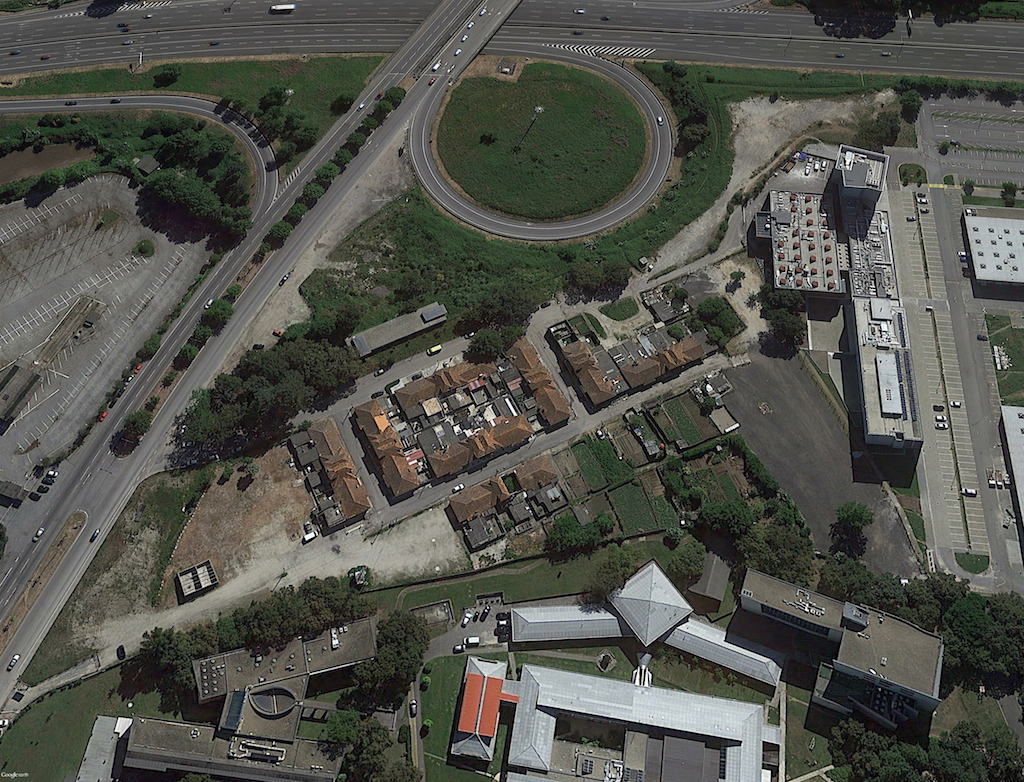
Google Earth, imagem de 2013. Download efetuado em 2015
Google Earth image from 2013. Download made in 2015
Nos quase cem anos de existência deste conjunto de casas, edificadas por um poderoso empresário no auge da primeira república em 1921, o cenário envolvente modificou-se radicalmente: de uma extensa paisagem rural para um polo urbanístico de grande movimento.
Hoje as ruas do Bairro da Fábrica da Areosa servem de acesso a um dos parques de estacionamento da FEUP e são ocupadas a cada centímetro por automóveis de pessoas que frequentam o hospital e as instituições de ensino daquela área. Isto é o que vejo a partir das janelas do meu local de trabalho, o 3º andar do edifício da biblioteca do IPP, por entre as árvores, os anexos e as hortas que nos separam (porque nunca me desloquei lá).
No ano em que foi concluída a construção do bairro (1921), Charles Chaplin apresentou ao mundo “The Kid – O garoto de Charlot”, a sua primeira longa metragem. O filme confronta-nos com uma dura visão do clima social desses tempos, em que a pobreza era generalizada e a polaridade entre ricos e pobres era extrema. Nos relatos que ouvi de pessoas que viveram as primeiras décadas do século XX e do que leio sobre a cidade do Porto de há 100 anos, a realidade portuguesa podia ser muito pior do que nos filmes do Charlot. Naqueles tempos não seria má sorte morar numa dessas casas brancas que vemos na fotografia da Casa Alvão.
In the almost one hundred years of existence of this set of houses, built by a powerful businessman at the height of the first Portuguese republic in 1921, the surrounding landscape has changed radically: from an extensive rural landscape to a major urban center pole.
Today the streets of the Areosa district serve as access to one of FEUP’s car parks and are occupied every inch by cars of people who attend the hospital and educational institutions in that area. This is what I see from the windows of my work place, the 3rd floor of IPP library building, through the trees, sheds and gardens that separate us (because I never actually went there).
In the year the building of the neighbourhood was completed (1921), Charles Chaplin introduced the world to “The Kid” his first feature film. The film confronts us with a harsh vision of the social climate of those times, when poverty was widespread and the polarity between rich and poor was extreme. In the reports I heard from people who lived through the first decades of the 20th century and what I read about the city of Porto from one hundred years ago, the Portuguese reality could be much worse than what is portrayed in Chaplin’s films. In those days it would not be bad luck to live in one of those white houses that we see in the photograph of Studio Alvão.
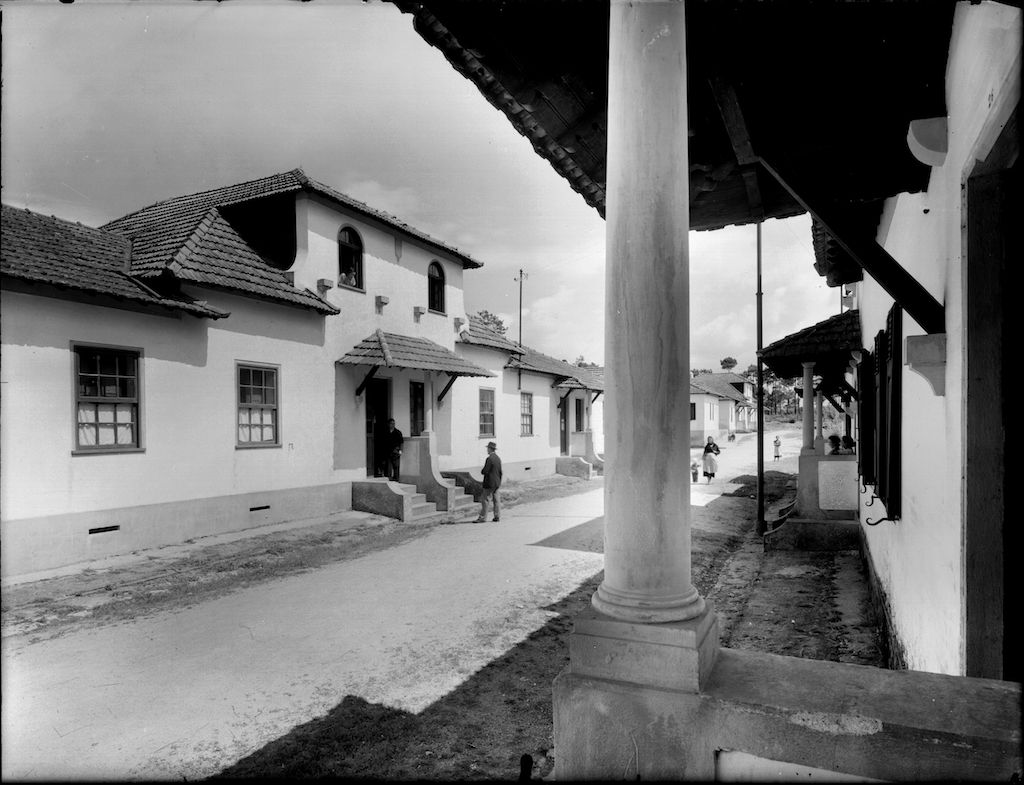
Bairro da Fábrica de Fiação e Tecidos da Areosa, Porto. Negativo de vidro, p/b, 18x24cm, gelatina e sais de prata. Fotografia Alvão. Imagem cedida pelo Centro Português de Fotografia com a referência: PT/CPF/ALV/020647
Fábrica de Fiação e Tecidos da Areosa, Porto. Glass negative, b/W, 18x24cm, gelatine silver salt. Photograph by Studio Alvão, courtesy of Centro Português de Fotografia with reference: PT/CPF/ALV/020647
O bairro da Fábrica da Areosa permanece no meu imaginário como um lugar de resistência, uma espécie de portal para a memória e a imaginação. Olho para ele através do enquadramento das janelas e pergunto-me se não sou eu que estou a ser observado.
Em vez de eliminar a curta distância que nos separa resolvo torná-la ainda maior e recorrer ao Google Earth (GE) para espiar o meu vizinho. A partir do GE entro numa visita ao bairro através do Google Street View (GSV) capturada em 2014. Apercebo-me que o Google já lá esteve pelo menos duas vezes e aumenta a minha vontade de nunca lá pôr os pés. Decido proteger o bairro do meu olhar e enfrentar o GSV como um jogo em que se combate e distorce o fluxo do tempo.
The neighborhood of Fábrica da Areosa remains in my imagination as a place of resistance, a kind of portal to memory and imagination. I look at it through the framing of the windows and wonder if it is not me who is being watched.
Instead of eliminating the short distance that separates us I make it even wider and resort to Google Earth (GE) to spy on my neighbour. From GE I go on a visit to the neighbourhood through Google Street View (GSV) captured in 2014. I realize that Google has already been there at least twice and that increases my desire to never set foot there. I decide to protect the place from my gaze and face GSV as a game in which one fights and distorts the flow of time.

